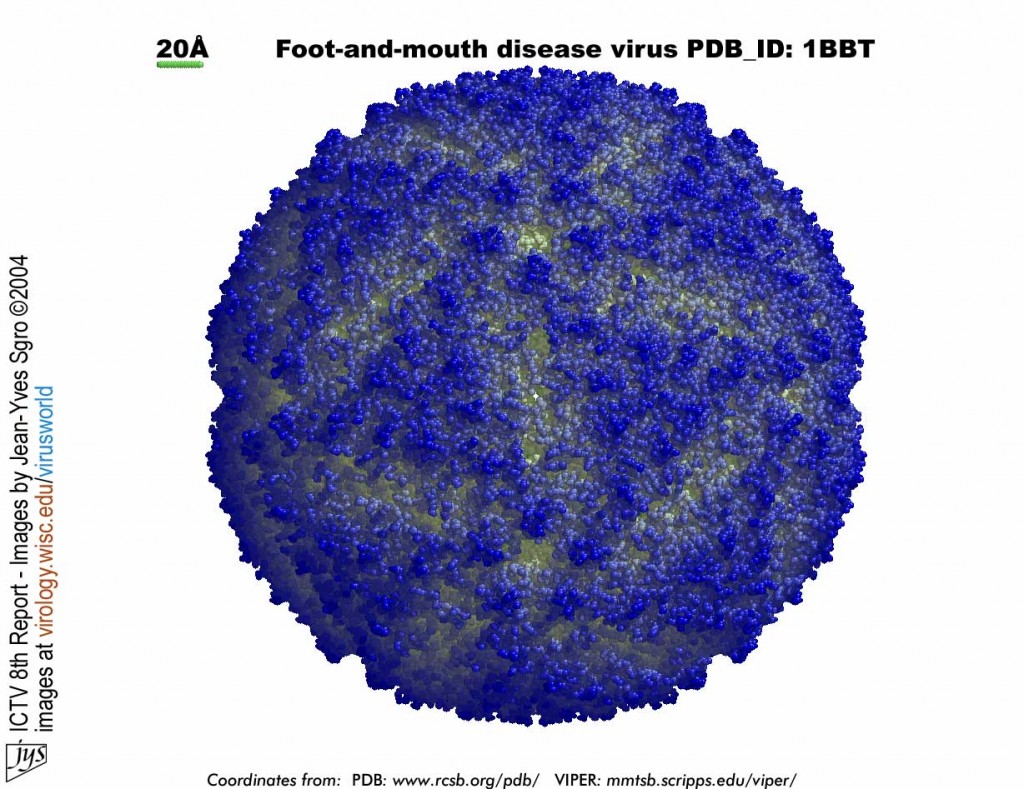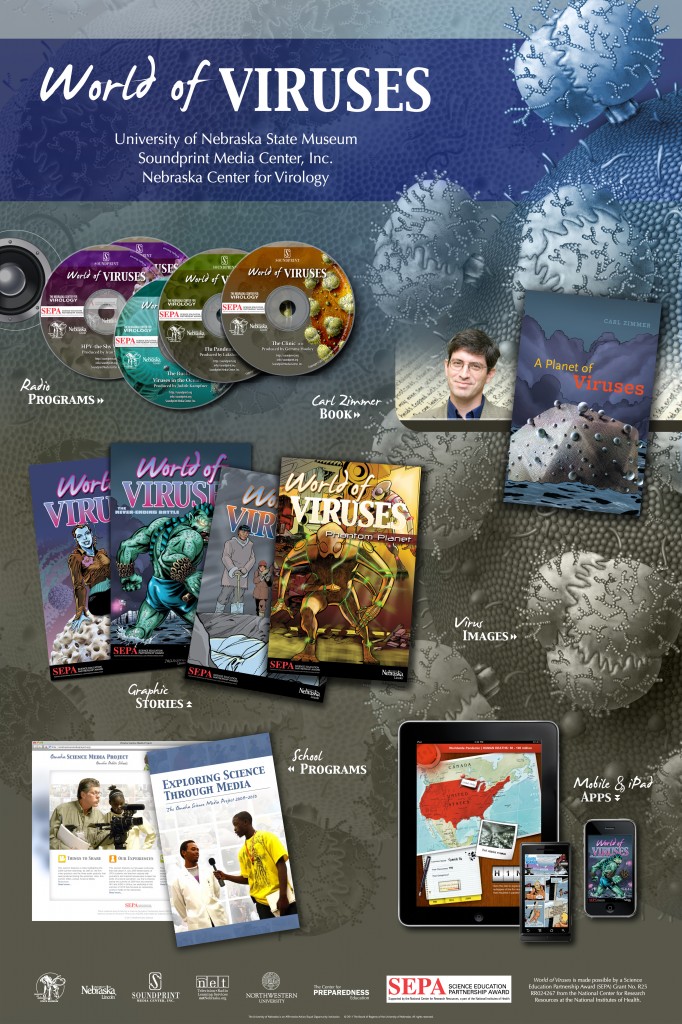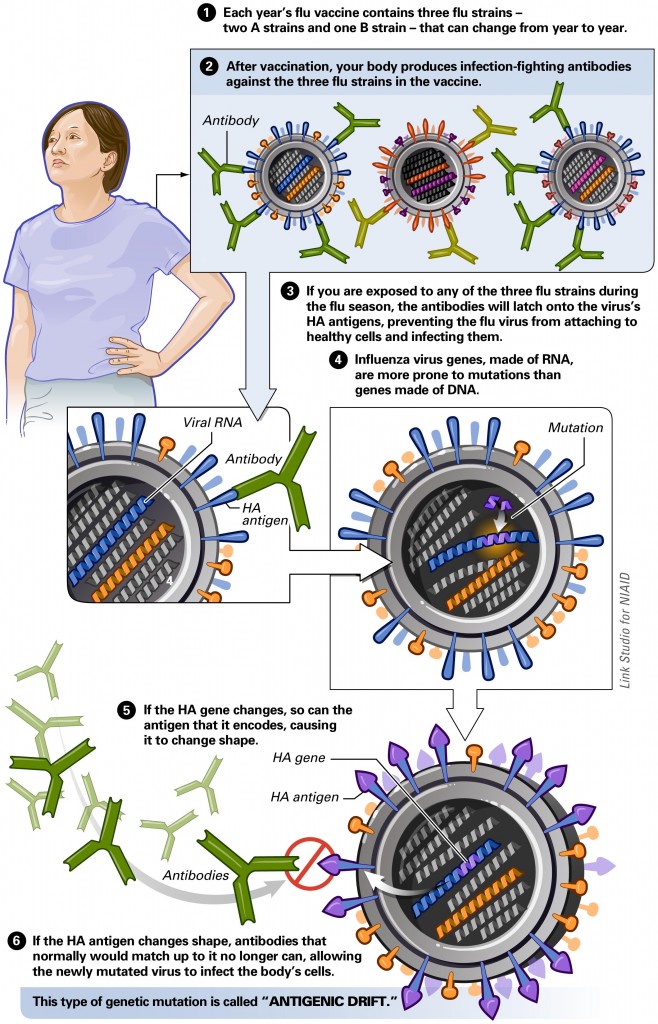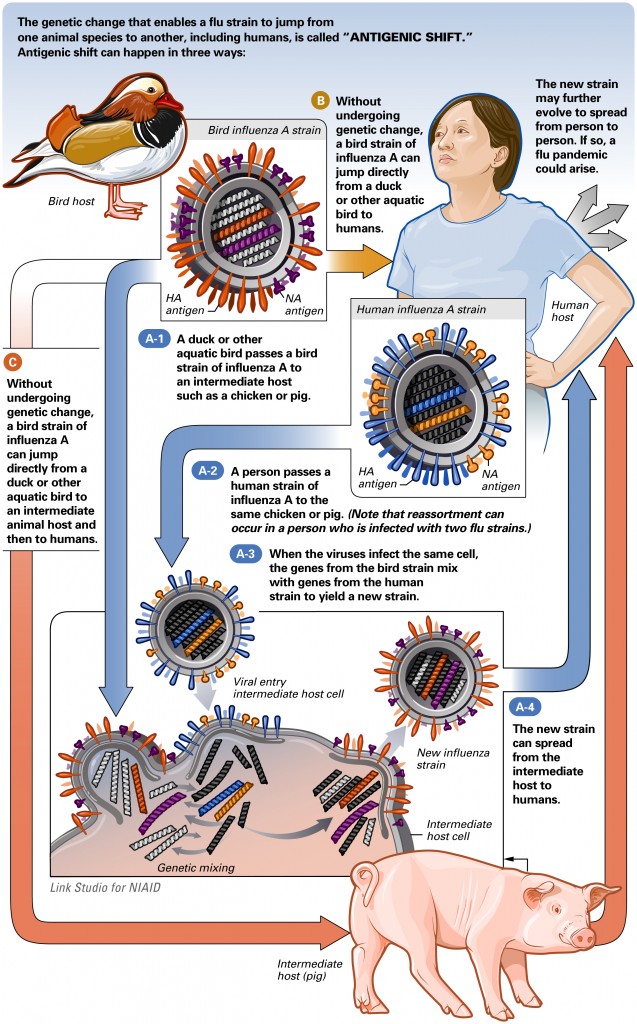Foot-and-mouth disease viruses cause illness in cloven-hoofed animals, such as cattle, pigs, and sheep. FMD is an RNA virus.
Permission granted for educational use/ Virus World/ Institute for Molecular Virology/ University of Wisconsin-Madison/ Jean-Yves Sgro/ 2004

This illustration shows HIV entering a cell and releasing its genetic material (RNA) and proteins inside the cell.
Public domain/ National Institutes of Health/ Unknown date

This illustration shows how HIV attaches to an immune cell and makes copies of itself.
Public domain/ National Institutes of Health/ Unknown date

This illustration of HIV structure shows the envelope, capsid, two RNA strands, and outer and inner proteins.
Public domain/ National Institute of Allergy and Infectious Diseases, National Institutes of Health/ 2009

This illustration shows how HIV infects cells.
Permission granted for educational use/ University of Nebraska State Museum and Science Museum of Minnesota/ Adam Wiens and Lonnie Broden/ 2005
Explore Evolution Exhibit, University of Nebraska State Museum

A T cell, a type of white blood cell, attacks HIV.
Permission granted for educational use/ University of Nebraska State Museum and Science Museum of Minnesota/ Adam Wiens and Lonnie Broden/ 2005
Explore Evolution Exhibit, University of Nebraska State Museum

“What is HIV?” comic created for the Explore Evolution exhibit.
Permission granted for educational use/ University of Nebraska State Museum and Science Museum of Minnesota/ Adam Wiens and Lonnie Broden/ 2005
Explore Evolution Exhibit, University of Nebraska State Museum

HIV evolves inside an infected baby. HIV can sometimes pass from an infected mother to her unborn child.
Permission granted for educational use/ University of Nebraska State Museum and Science Museum of Minnesota/ Adam Wiens and Lonnie Broden/ 2005
Explore Evolution Exhibit, University of Nebraska State Museum

Mothers can pass HIV to their children. Researchers have learned that the virus can evolve into new forms in a matter of days.
Permission granted for educational use/ University of Nebraska State Museum and Science Museum of Minnesota/ Adam Wiens and Lonnie Broden/ 2005
Explore Evolution Exhibit, University of Nebraska State Museum

This illustration shows how HIV invades human cells and releases RNA inside.
Permission granted for educational use/ University of Nebraska State Museum and Science Museum of Minnesota/ Adam Wiens and Lonnie Broden/ 2005
Explore Evolution Exhibit, University of Nebraska State Museum

This illustration shows HIV entering human cells.
Permission granted for educational use/ University of Nebraska State Museum and Science Museum of Minnesota/ Adam Wiens and Lonnie Broden/ 2005
Explore Evolution Exhibit, University of Nebraska State Museum

The World of Viruses project is made possible by a Science Education Partnership Award Grant No. R25 RR024267 from the National Center for Research Resources at the National Institutes of Health.
Angie Fox
World of Viruses

This illustrates the genetic change by mutation that causes new seasonal flu strains each year. This is called “antigenic drift.”
Public domain/ National Institute of Allergy and Infectious Diseases/ Links Studio, Illustrator/ 2011

This diagram shows how the influenza virus invades and undergoes replication inside a cell.
Public domain/ courtesy, National Library of Medicine/ 2006

The structure of the influenza virus that causes flu in pigs shows the assortment of protein spikes present on the capsid, the RNA segments, and different types of proteins inside.
Public domain: This applies worldwide/ Wikimedia/ Eigene Herstellung, source/ M. Eickmann, author/ 2005

This diagram illustrates the reassortment of genetic material that enables a flu strain to jump from one animal species to another, including humans. This is called “antigenic shift.”
Public domain/ National Institute of Allergy and Infectious Diseases/ Links Studio, Illustrator/ 2011
